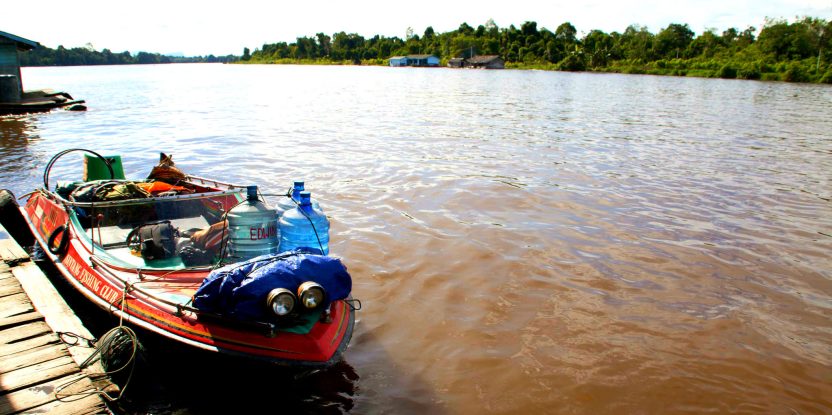At a glance :
- Progress toward REDD+ readiness in Zambia has been delayed by institutional rearrangements following a change in government.
- Zambia’s efforts to curb deforestation must cross sectors; this is happening in some areas, but not in others.
- REDD+ in Zambia will benefit from greater input from citizens, and institutions should be adjusted to allow for this.
Three years ago, Zambia started on the road toward REDD+ readiness. The government’s decision to act to curb deforestation and forest degradation was critical, as Zambia’s deforestation rate was among the highest in the world, at 1.5%, or somewhere between 250,000 and 300,000 hectares of forest cleared every year.
Zambia is now one of 17 UN-REDD Programme partner countries receiving support to prepare for and implement REDD+, or reducing emissions from deforestation and forest degradation “plus” the conservation of forests, enhancement of forest carbon stocks and sustainable management of forests. REDD+ is a climate change mitigation mechanism by which developing forested countries are offered incentives to avoid greenhouse gas emissions associated with forest clearing.
Zambia has taken solid steps toward drafting its national REDD+ strategy through a joint, or integrated, program designed to simultaneously build the capacity of institutions and stakeholders in Zambia to implement REDD+, develop monitoring, reporting and verification (MRV) of carbon stock changes in Zambia’s forests, and design mechanisms for sharing the benefits from REDD+.
In July this year, representatives from government departments and research institutes met to discuss this national program and its progress. A recurrent theme emerged from the comments: the slow pace of policy development and legislation review was likely to hinder Zambia’s preparations for REDD+.
We lost almost a year trying to locate where Zambia’s forest department was.
We don’t have to look too far to identify a possible explanation for this delay: that the institutions that had originally underpinned or overseen REDD+ had been changed or abolished. Indeed, the change of government in 2011 saw such a drastic structural rearrangement that, as Ignatius Makumba, former Acting Director of Zambia’s Forest Department, put it: “we lost almost a year trying to locate where Zambia’s forest department was”.
For REDD+ to work in the long term and deliver emission reductions, it is essential to change “business-as-usual”, that is, the existing activities and policies behind forest degradation and loss.
But the main drivers of deforestation and forest degradation in Zambia—agriculture, urbanization, charcoal and woodfuel extraction, encroachment upon forest estates and illegal logging—cut across several sectors. Therefore, if Zambia’s national REDD+ strategies are to succeed, these sectors will have to work together to tackle deforestation.
Are these sectors already working in tandem? In some cases no, and in others yes.
Although some programs have been set up to link the environment and natural resources departments, most notably the Environment and Natural Resources Management and Mainstreaming Programme (ENRMMP), supported by the Government of Denmark, these have been put on hold because of institutional changes.
“Integration as envisaged within the national joint program will prove to be a challenge,” Makumba said. “There is a tendency for most institutions to try to protect their niches. People are not willing to work together.”
Restoring Zambia’s forests
In other places, however, cross-sectoral participation is making a meaningful contribution to the national joint program. This is true of the frameworks created by the Development Coordinating Committees in the district, which regularly addresses environmental and related issues together.
Other issues needing attention to help REDD+ on its way in Zambia are capacity building and consultation—on which point we must ask whether Zambia’s existing structures allow a sufficient level of participation. The dominance of technocratic structures must be reduced so that the voices of citizens—through community-based and civil society organizations—can be heard. The people of Zambia have a lot to offer, and their input will ensure that the REDD+ strategy that is ultimately proposed contains the necessary checks and balances.
The US Agency for International Development (USAID) is supporting the Center for International Forestry Research (CIFOR) in Zambia to conduct research and development on models for measuring, reporting and verification (MRV) for REDD+.
We want you to share Forests News content, which is licensed under Creative Commons Attribution-NonCommercial-ShareAlike 4.0 International (CC BY-NC-SA 4.0). This means you are free to redistribute our material for non-commercial purposes. All we ask is that you give Forests News appropriate credit and link to the original Forests News content, indicate if changes were made, and distribute your contributions under the same Creative Commons license. You must notify Forests News if you repost, reprint or reuse our materials by contacting forestsnews@cifor-icraf.org.

